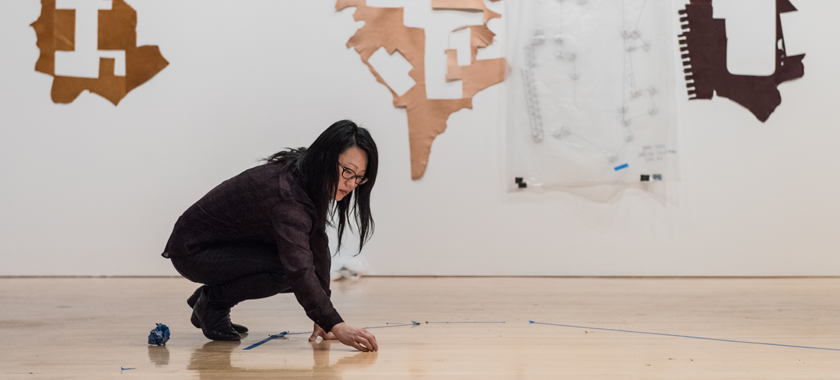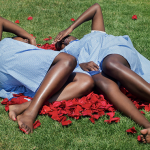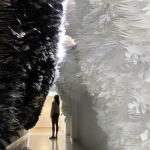“Ask the Artists” Part 6: How Do You Connect with Your Larger Creative Community?
Hear from Jennifer Wen Ma, Sarah Hennies, Rupy C. Tut, Eva and Franco Mattes, Derek Fordjour, and more.
Whether you are an individual artist who works alone or one who is actively collaborating with others, there is value to being part of, and contributing to, your larger creative community. The question of how to make authentic connections, and how much time to devote to the social aspect of being an artist, is one that many artists grapple with.
NYFA’s “Ask the Artists” series continues with responses from literary, performing, and visual artists on this topic, with an eye towards ways of connecting online, offline, and in-between!
How do you connect with your larger creative community? Please share tips and advice for artists who may be unsure of how to best approach the social aspect of being an artist.
Jennifer Wen Ma
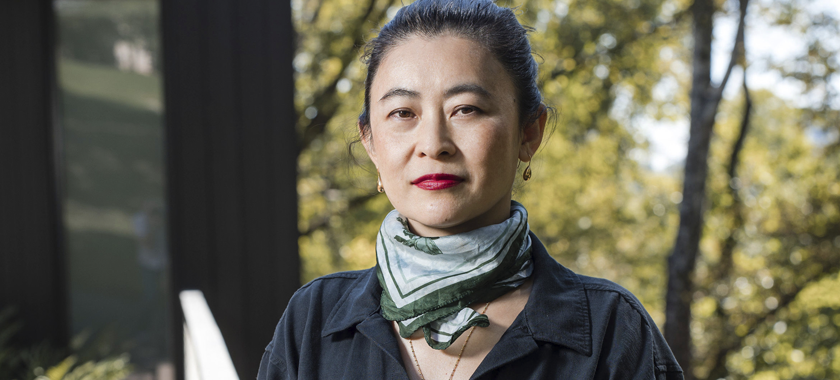
Community is so important, even though I don’t maintain a huge social network, I am nurtured more by intimate and direct relationships. So when I meet artists, curators, and other cultural workers that I have an affinity with, I get their contact information, and do my best to keep in touch through intentional emails, messages, make efforts to meet in person, support their projects, etc. I engage in discussions that stem from true curiosity, and see if we share common interests.
It’s not always easy, as people’s lives are busy, and sometimes people want you to advance their careers in some transactional way. But I try not to be jaded and cynical, but treat people genuinely with my time and interest, and share resources when it’s appropriate.
My MFA students often ask, how do you make sure you are not being taken advantage of? My answer is, you don’t have to do it twice when what you offer and give are not reciprocated. I have forged some great friendships and alliances this way over the years.
Ma was a NYSCA/NYFA Artist Fellow in Performance Art/Multidisciplinary Work in 2003. Her “An Inward Sea: Oral History” project is Fiscally Sponsored by NYFA, and her “Paradise Interrupted” project was formerly Fiscally Sponsored by NYFA.
Kalup Linzy
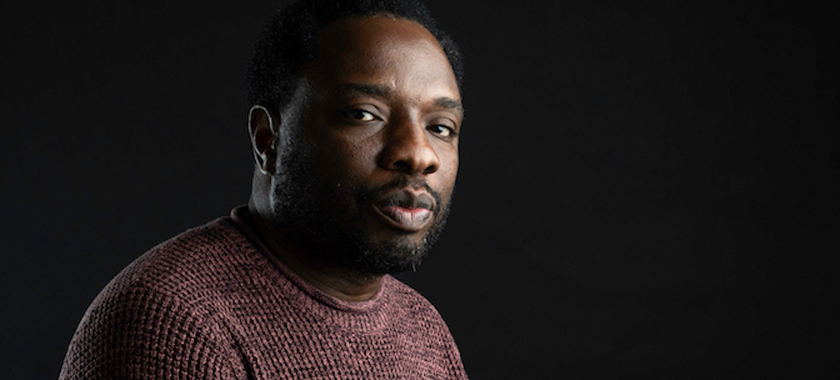
Fred Wilson told a group of us years ago at Skowhegan that the art world is 50% social and 50% being in your studio. It is possible that percentage has changed with the emergence of social media. If you are socializing all the time, it means you are not in your studio creating. If you are in your studio all the time, it means you are not out socializing, meeting new people and/or nurturing those relationships you already have. A lot of this can now be done virtually.
Artist residencies are a wonderful way to both work and socialize. Recently, I launched my own artist residency and social space in Tulsa called the Queen Rose Art House. It is a place to create, present, and socialize. It is also important to find mentors, peers who are on your level, and mentees. This helps create a healthy creative ecosystem.
Linzy was a NYSCA/NYFA Artist Fellow in Video/Film in 2015.
Image Detail: Kalup Linzy, Courtesy of Melissa Lukenbaugh and the Tulsa Artist Fellowship
Sarah Hennies
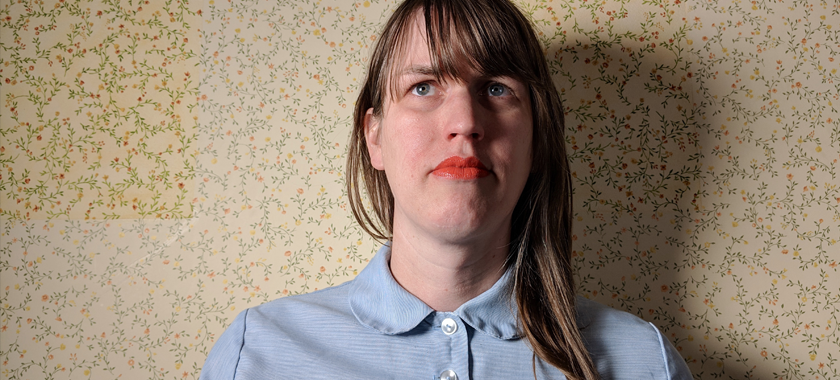
I realize this is a very performing arts-based response (I know visual artists can’t always go out and “just do a show”) but the only kind of “networking” I know how to do is work work work work. I have been performing regularly for almost 30 years and have interacted with an incalculable number of musicians simply by playing concerts, many of whom have become close friends and collaborators.
Hennies was a NYSCA/NYFA Artist Fellow in Music/Sound in 2016.
Image Detail: Sarah Hennies, Photo Credit: Mara Baldwin
Geoffrey Chadsey
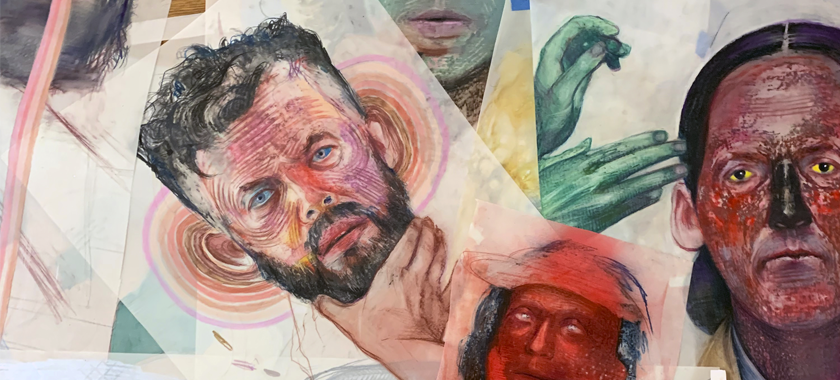
Create a studio space with your friends. The only reason I have kept going to my studio over 30 years is because I love being there. It’s a clubhouse of camaraderie, critique, care, and shared resources.
Chadsey was a NYSCA/NYFA Artist Fellow in Printmaking/Drawing/Artist Books in 2011 and 2020.
Image Detail: Geoffrey Chadsey (Printmaking/Drawing/Book Arts ’20); “a collection of heads;” 2020-ongoing; watercolor pencil and crayon, chalk spray paint, on mylar; dimensions variable
J.T. Rogers
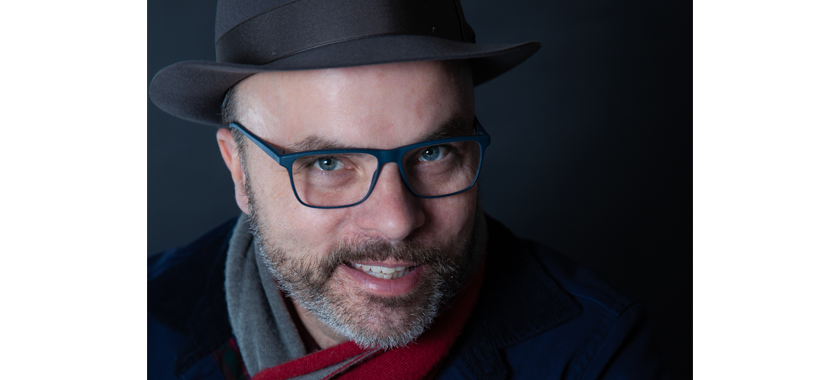
When I want to reach out to someone in my creative community who I don’t know, I do my best to get their phone number or home address so I can call them or write to them through the post. I find this makes all the difference.
Rogers was a NYSCA/NYFA Artist Fellow in Playwriting/Screenwriting in 2004, 2008, and 2016.
Image Detail: J.T. Rogers, Photo Credit: Rebecca Ashley
Lauri Lynnxe Murphy
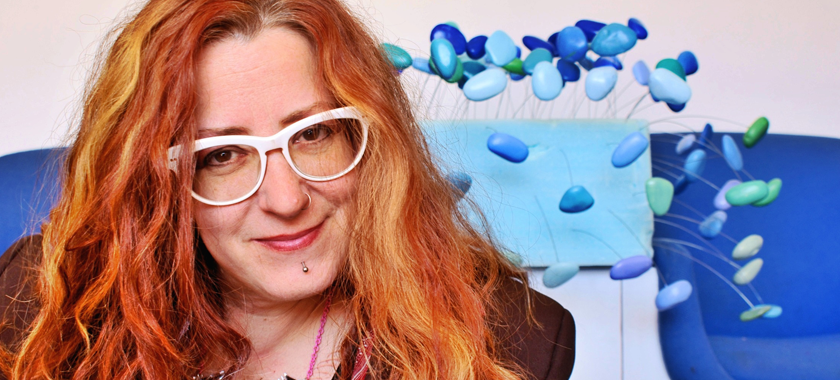
I’m incredibly introverted and had to teach myself how not to be so awkward when talking to people by mirroring their behavior. I find the social aspects of being an artist exhausting, and yet, I LOVE my community and love to be involved in it! Because openings can be so tiring and really just a series of half-conversations, I reach out and schedule mutual studio visits with artist friends more these days than I connect on social media, as I find one-on-one conversations more rich and rewarding. If there’s an artist I admire, or a curator I would like to work with, I try to connect with them. However: the art world runs on relationships, and transactional relationships are terrible – don’t only think of what you can get from someone, that kind of social climbing doesn’t lead to long-term connection.
When I was starting out, I went to openings every single weekend, and found that so many opportunities just came out of conversations! You have to SHOW UP. The problem is, this is often antithetical to being an artist, especially if you have a day job and need to protect your studio time! I wish we didn’t privilege social connections as much as we do in the art world, but to some degree it is just human nature, and even us introverts have to learn how to balance time in public with time in the studio. One of the greatest ways to meet people is in shared studio environments and residencies, so be sure to leverage those opportunities whenever you can to expand your network.
Murphy was a mentor in NYFA’s Immigrant Artist Mentoring Program: Denver in 2021.
Image Detail: Lauri Lynnxe Murphy, Photo Credit: Tammy Shine
Jean Shin
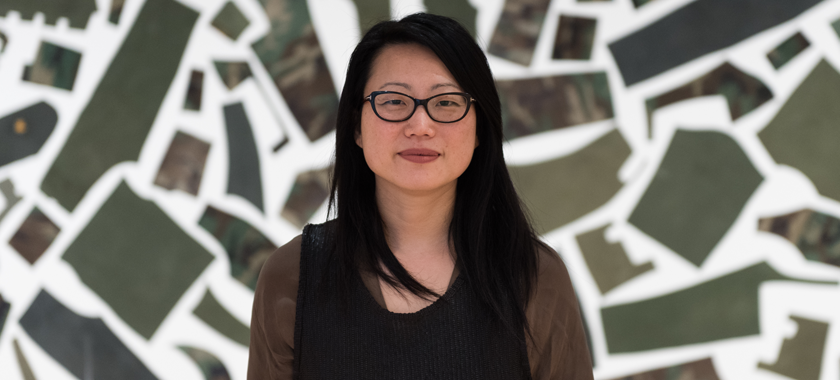
There are so many ways to connect socially with creative communities. Initiate a crit group of your artist peers that meet regularly in your studios or online. Build deep relationships and conversations that provide honest feedback on your work and practice. Set up and make time to meet up with your colleagues for drinks and meals. Be there for each other by showing up to each other’s openings. Make dates with a friend to attend openings, see exhibitions, art fairs, artist talks, and panels. Celebrate each other’s achievements, big and small in both work and life. Follow your instincts, but also occasionally go outside your comfort zone. It helps by doing it together with close friends. Invite other artists and your community to collaborate and partner together on a project.
Shin was a NYSCA/NYFA Artist Fellow in Sculpture in 2003 and Architecture/Environmental Structures in 2008.
Detail: Jean Shin, Photo Credit: Joseph Hu, courtesy Philadelphia Museum of Art
Sarah Oppenheimer
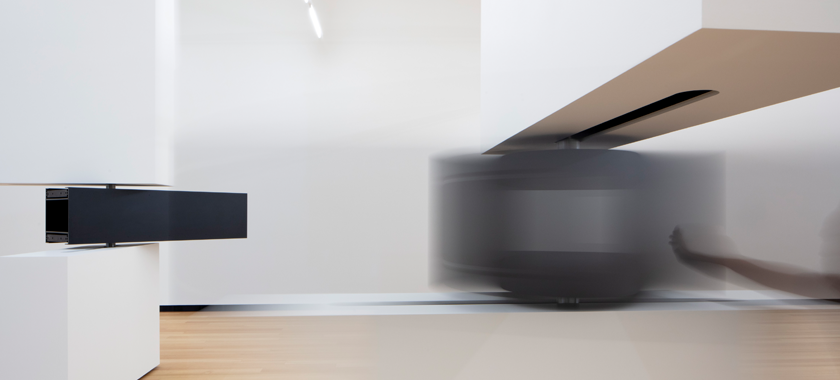
Conversations are food.
Oppenheimer was a NYSCA/NYFA Artist Fellow in Architecture/Environmental Structures/Design in 2006, 2010, and 2016.
Image Detail: Sarah Oppenheimer; “SM-N4;” 2021; aluminum, steel, and existing architecture; dimensions and duration: variable; installation view: Wellin Museum of Art at Hamilton College, USA; Photo Credit: John Bentham
Luis Valderas
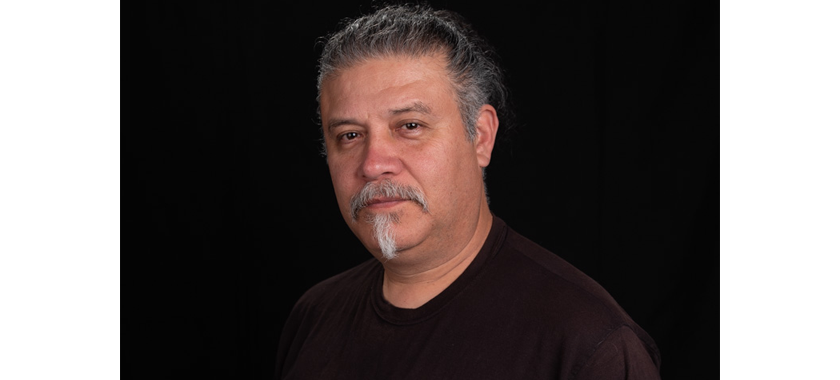
One of the things that I would share about how to best approach the social aspect of being an artist is to have an understanding of who you are and where you stand on your values as a human on this planet. Those values should line up with each other. If you are on social media to satisfy your social needs I suggest that you consider more IRL relationships with other artists. IRL and on social media it is better to call people in, than to call them out—that’s how you grow your community for the better.
Valderas was a mentor in NYFA’s Immigrant Artist Mentoring Program: San Antonio in 2018 and 2019, and is a member of NYFA’s Board of Trustees.
Image Detail: Luis Valderas, Photo Credit: LMG Photography
Erin O’Keefe
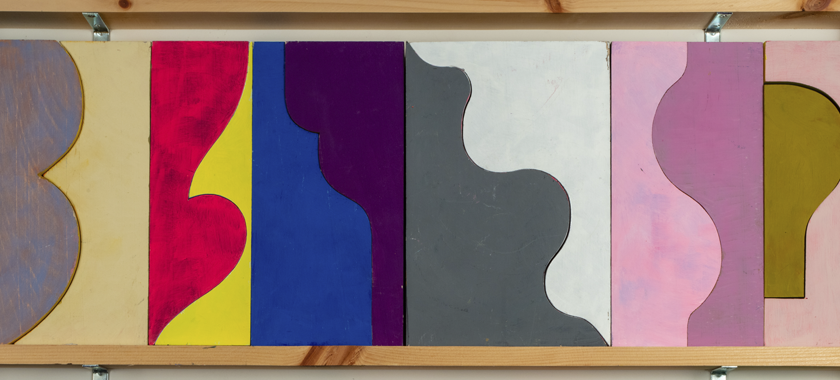
I think the social aspect of being an artist is really just about genuine interest—in the work of another artist, or the program of a gallery, or a shared set of concerns in the work. I think generally people are happy to connect about things that matter to them—I’ve gotten so much from these dialogs, whether it’s a studio visit swap, or an exchange on instagram. Things build slowly, but those sincere connections can grow in really lovely and unanticipated ways.
O’Keefe was a NYSCA/NYFA Artist Fellow in Photography in 2019.
Image Detail: From Erin O’Keefe’s studio, Photo Courtesy of the Artist
Eva and Franco Mattes
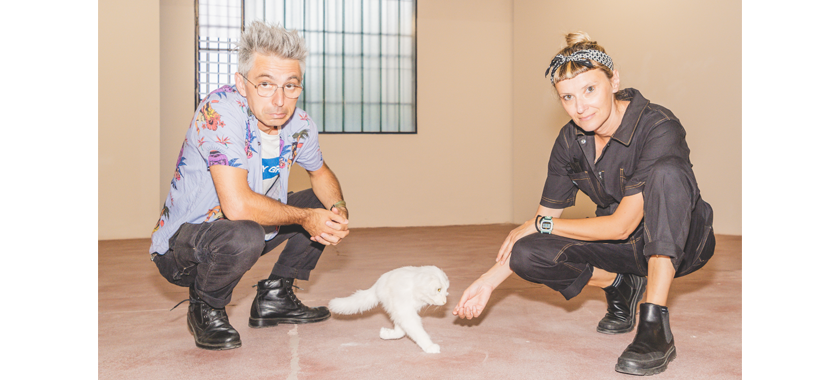
If you live in the big art cities like NYC, London, or Berlin, it won’t be hard to connect with fellow artists, you have tons of opportunities at openings, lectures, Biennales, etc. But before that we lived in more peripheral cities, where there was no real art scene, and one thing that really helped us staying in touch was organizing a festival in which we could invite over artists we admired and wanted to meet. We’ve always found that it’s easier to spend quality time with artists when we’re outside of the city frenzy, because there’s less pressure to perform, so everyone’s a bit more chilled. Our two cents ;-).
Eva and Franco Mattes were NYSCA/NYFA Artist Fellows in Digital/Electronic Arts in 2017.
Derek Fordjour
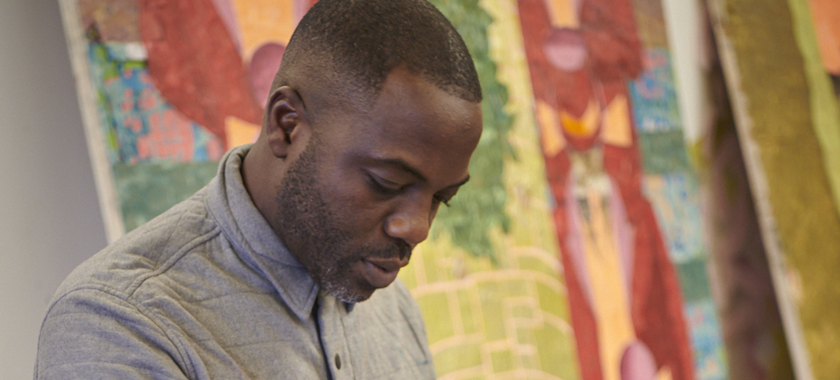
Nothing beats going to openings, participating in crit groups, going to grad school, or merely attending parties in order to meet people in person and form genuine connections. I too experience social anxiety and sometimes avoid social situations. But, a big turn came for me when I accepted the responsibility as less personal and more of a professional obligation. I thought of it like my art as a child and me as the parent. My job was to advocate, find safe spaces and helpful relationships so that my art could grow up, get out of the studio, and make its own way in the world!
Fordjour was a NYSCA/NYFA Artist Fellow in Painting in 2018.
Image Detail: Derek Fordjour, Photo Credit: Jason Schmidt
Rupy C. Tut
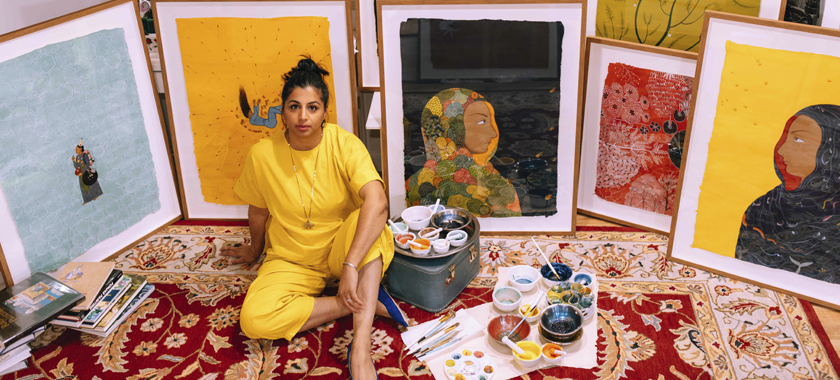
Using social media to affirm and learn about the work of other artists, especially immigrant artists has been a continued effort I try to make as a part of my practice. Building a virtual Immigrant Artist Network has been one way to build a community that connects online with the purpose of reducing isolation, providing feedback and support as well as exploring collaborations with other immigrant artists.
Tut was a mentee in NYFA’s Immigrant Artist Mentoring Program: Oakland in 2019.
Image Detail: Rupy C. Tut in studio, Photo Credit: Lara Kaur
Chico MacMurtrie
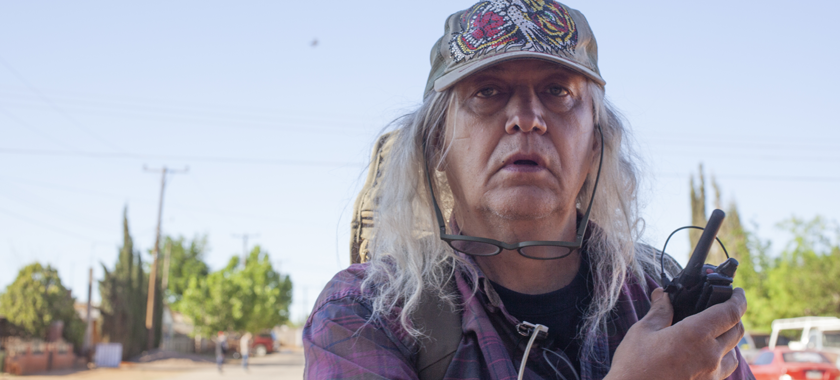
I try to keep a relationship with artists I admire. I like to go visit them, even if it’s not art-related. Because eventually good conversation comes out that maybe helps each other. I do keep in touch with them on social media, but I think if you can find a way to be personable with them where you can actually go see their work or invite you to come see your work, I think that’s the best way to do it still.
MacMurtrie was a NYSCA/NYFA Artist Fellow in Computer Arts in 2003, Digital/Electronic Arts in 2009, and Craft/Sculpture in 2020.
Image Detail: Chico MacMurtrie after the “Border Crosser” border performance at the Naco, Arizona / Naco, Sonora U.S.- Mexico border, 2021, © Chico MacMurtrie/Amorphic Robot Works Photo Credit: Bobby N. Adams
Baseera Khan
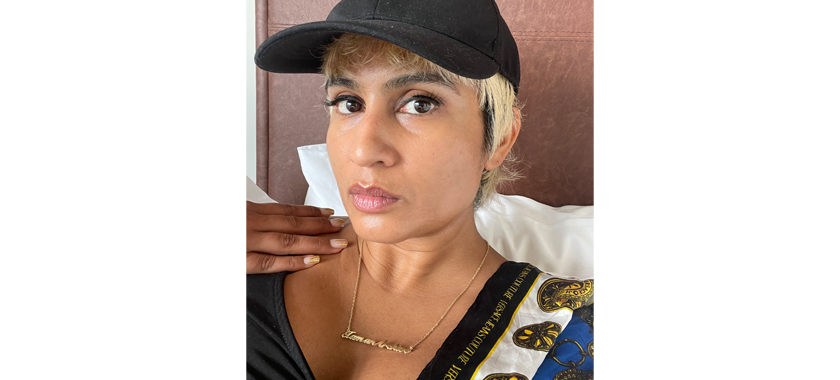
I say get used to powerpoint presentations and lecturing about your work. I think doing long form speeches about your work, where people see a set of slides while you talk about your work, is the best way to share your holistic practice. Eventually schools and museums ask you to come to them and at times pay you to share your work. The question and answering after you share work is a very magical moment. You will learn a lot about your practice during these moments of dialogue and exchange of ideas. Be aware of patterns and repetition of comments, try not to ignore multiple people reading your work in the same way.
Khan was a NYSCA/NYFA Artist Fellow in Interdisciplinary Work in 2018.
Image Detail: Baseera Khan, Courtesy of the Artist
Chemin Hsiao
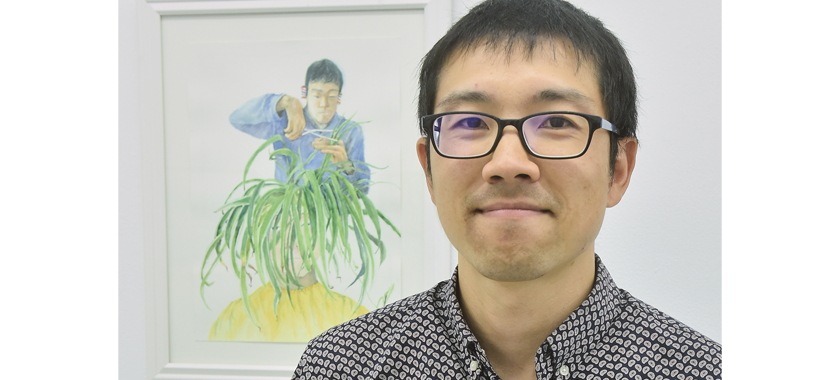
Regarding the social aspect of being an artist, I will always lean toward encouraging those artists who may be unsure, to simply get to know themselves a little more, for instance: “What is the comfort zone you are ok with? Posting about your recent artwork online, or visiting a gallery opening and speaking with a stranger?” Ask yourself what is doable within you personally, and do those first. If you feel more open/relaxed that day, do one extra, for instance, talk to one more person at an event you attend. If you feel uncomfortable, don’t do it. Finding that balance which makes you feel at ease is the key.
Hsiao was a mentee (2016) and a mentor (2022) in NYFA’s Immigrant Artist Mentoring Program.
Image Detail: Chemin Hsiao, Courtesy of the Artist
Lily Honglei
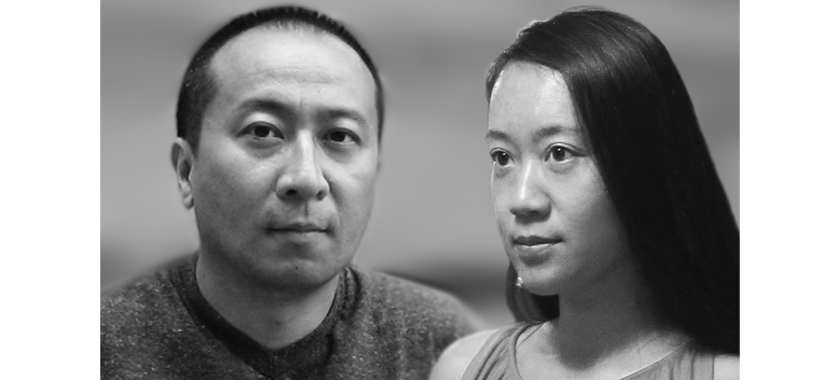
To connect with the creative community on social media, being responsive, caring, and respectful is the key. For the best outcome, artists can make new posts on a regular basis, for instance, twice a week. Sometimes our communications with artists and art professionals on social media may extend to long conversations through messages, virtual studio visits, and collaborations, which are invaluable experiences.
Lily Honglei’s “The Stereotype” project is Fiscally Sponsored by NYFA, and Honglei was a NYSCA/NYFA Artist Fellow in Interdisciplinary Work in 2015.
Image Detail: Lily and Honglei headshot, Photo Credit: Lily Honglei Art Studio
Shimon Attie
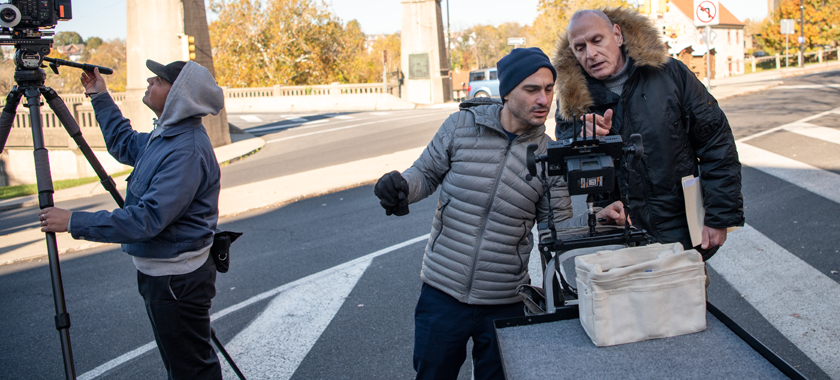
I’m a member of the Elizabeth Foundation, I have a small studio there, and that’s a great built-in community. The other way that I connect with the larger creative community is that I do a fair number of artist colonies and retreats: MacDowell, Yaddo, Sacatar in Brazil, I just came back from Camargo Foundation’s BAU Institute Residency in southern France. I’ve been at Artport in Tel Aviv, I was at the American Academy in Rome for a year. Those kinds of full immersion experiences with other artists are incredible.
Attie was a NYSCA/NYFA Artist Fellow in Photography in 2000, Performance Art in 2005, Video in 2010, and Architecture/Environmental Structures/Design in 2019.
Image: Shimon Attie (on right) from the making of “Starstruck: An American Tale,” 2021-22, Photo Credit: Christine Kreschollek
Read more “Ask the Artists” posts
“Ask The Artists” Part 1: What Is Your Definition of Success?
“Ask The Artists” Part 2: What Is Your Definition of Success?
“Ask the Artists” Part 3: What is the Most Valuable Career Advice You’ve Ever Received?
“Ask the Artists” Part 4: What is the Most Valuable Career Advice You’ve Ever Received?
You can find more articles on arts career topics by visiting the Business of Art section of NYFA’s website. Sign up for NYFA News and receive artist resources and upcoming events straight to your inbox.

